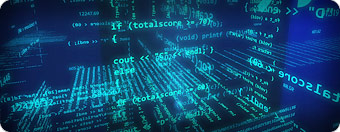By Dimitrios Eliades
Generate Group Pty Ltd ACN 072 667 228 v Sea-Tech Automation Pty Ltd ACN 003 916 434 and Gregory John Harris
The earlier proceeding
In 2007 the author reported on a decision of Einstein J of the New South Wales Supreme Court in respect of a notice of motion seeking interlocutory relief. The application sought inter alia, injunctive relief requiring the defendant in that proceeding, Sea-Tech Automation Pty Ltd (“Sea-Tech”), to provide the plaintiff (“Generate”) with a copy of the source code versions of three computer programmes. [i]
The facts arise in a relatively common circumstance in intellectual property cases. A party has a concept or even a developed idea or prototype and seeks specialised assistance to further develop or refine the concept or prototype. A dispute as to the ownership of the intellectual property rights in the upgraded product is not unusual in these cases.
Broadly, the proceeding arose from a fallout between Generate, who was in the business of providing management products to the hospitality industry and Sea-Tech, who was in the business of software development. More particularly, Generate contended it entered into a written agreement with Sea-Tech, whereby it furnished Sea-Tech with software known as Bevlink version 3, which had been the product of prior software developers and which it was then using with its customers.
Generate claimed it provided Bevlink version 3 to Sea-Tech on the basis that Sea-Tech would enhance the software as reasonably required by Generate. In exchange for Sea-Tech’s services, the parties would share the revenue derived from the “Bevlink” software, later re-branded under the name “Generate”.
Between 1998 and 2002 Sea-Tech produced Bevlink versions 4 and 5 conducted maintenance on the Bevlink programme including corrections, bug fixing and customisation responsive to customer requirements, and enhancements. [ii] In early 2004, Sea-Tech had provided numerous versions of Bevlink version 6 for Generate to evaluate but the product was not ready for market.
Upon giving the appropriate undertakings to the Court as to damages, Einstein J ordered Sea-Tech to deliver to Generate copies of the source code for the identified computer programmes. His Honour was satisfied that:
- Generate had shown a degree of probability of likelihood of success in its construction of the agreement with Sea-Tech and accordingly that it had a serious and not speculative case which has a real possibility of ultimate success. [iii]
- Undertakings to the Court, including:
– By Generate’s directors’ in the sum of $190,000 (being the value attributed by the defendant to the source code);
– As to confidential disclosure arrangements regarding the software, were sufficient, when considered in the light of all of the other evidence, to warrant the exercise of the Court’s discretion in terms of both a serious case issues as well as the balance of convenience issue, to make the orders for injunctive relief. [iv]
There does not appear to have been any judgment from a final hearing of the proceeding or from any application ending the proceeding early.
Recent developments
On 18 December 2015, Generate Group Pty Ltd, commenced proceedings in the Federal Court of Australia against Sea-Tech alleging that Sea-Tech had infringed Generate’s copyright in a computer software product known as Generate V6. Sea-Tech cross claimed against Generate on grounds not clear from the available public documents, but assumed to be in relation to a competing clasim of ownership of the copyright in the relevant source code/s.
Between December 2015 and April 2016 the court file reflects an orderly compliance with a pleading timetable. By June 2016, Generate suspected that Sea-Tech was responsible for hacking into its computer system and on 5 July 2016 obtained an interlocutory injunction. Generate had by the time of the injunction application discovered evidence which indicated that its electronic files relating to the litigation had been remotely accessed using a remote access software program titled “Team Viewer” and codes not associated with Generate. [v] Generate also identified that a director of Sea-Tech, Mr Harris, who was subsequently joined as second respondent, was responsible for this unauthorised access. [vi]
TeamViewer is a software program which enables remote access to a server and connected Team Viewer logged on computers. Access is available with the correct Team Viewer ID and password. The orders associated with the injunction made on 5 July 2016 included that Sea-Tech propose a forensic expert to take and keep a secure image of devices associated with two specified TeamViewer identification numbers.
Thereafter determinations were made in respect of each parties’ respective interlocutory applications, subpoena requests for the production of documents, which included consideration of claims of legal professional privilege. [vii]
Relevantly orders were made by Jagot J on 17 April and 27 April 2018 which appear to have finalised the matter, at least before her Honour. At the time of this publication there do not appear to have been published reasons for judgment accompanying the orders. The orders:
- Made 17 April 2018 against Gregory John Harris:
– Are prefaced by a penal notice to Mr Harris and any other person who knew of this order and did anything which helped or permitted Mr Harris to breach the terms of the order.
– Provided that Mr Harris be restrained for a period of 5 years from inter alia competing with Generate in the supply of beverage monitoring information technology in Australia; being a director of any entity so competing with Generate or being an employee of such a competing entity.
– Required Mr Harris to deliver up documents list in a schedule to the orders.
– Required Mr Harris to use an identified programme to delete copies of documents list in a schedule to the orders.
– To be permanently restrained from using, accessing, copying, modifying, distributing or otherwise dealing with identified files list in a schedule to the orders or any other files copied from Generate’s server without its knowledge.
- Made 27 April against Sea-Tech Automation Pty Ltd on an ex parte basis:
– Are prefaced by a penal notice to Sea-Tech and any other person who knew of this order and did anything which helped or permitted Sea-Tech to breach the terms of the order.
– Entered judgment in favour of Generate against Sea-Tech in the amount of $4,368,135.
– Dismissed the Sea-Tech cross claim against Generate.
– Provided that Sea-Tech be restrained for a period of 5 years from inter alia competing with Generate in the supply of beverage monitoring information technology in Australia.
– Provided a restraint by Sea-Tech its servants and agents from licencing or otherwise supplying or offering to supply the computer programme currently known as Flow or Flowtech or from receiving any financial benefit from the programme.
o Required Sea-Tech to deliver up documents list in a schedule to the orders and to delete files of Generate in Sea-Techs’ possession and control from all its locations.
– Required Sea-Tech to use an identified programme to delete copies of documents list in a schedule to the orders.
– To be permanently restrained from using, accessing, copying, modifying, distributing or otherwise dealing with identified files list in a schedule to the orders or any other files copied from Generate’s server without its knowledge.
Take home point
The litigation in two superior courts over some 11 years involved a dispute as to ownership of the copyright in the source code of programme enhancements. If a single take home point emerges from the proceedings, it is best described (in this author’s opinion) by Einstein J in his 2007 in this statement:
“One of the real difficulties which faced the parties on the interlocutory hearing and which will face the parties on the final hearing, concerns the simple fact that the Software Development and Support Agreement to which they signed, did not descend into the detail of defining [or seeking to define], which parts, if any, of the source code was to be made available to the plaintiff. As will appear from what follows the definition of “software” utilised by the parties was general in its terms and did not distinguish between any language or form of code in which the computer program might be recorded.” [viii]
It is one thing therefore to make a provision as to the rights to the source code and another to identify with precision what the source code encapsulates and whether the rights relate to parts of the source code and if so what parts. The emphasis is not unlike the requirement expressed often by the courts that confidential information be identified with precision and not as a blanket catch-all phrase assumed to be linked for example to a product, method, integer or process.
Dimitrios Eliades, Barrister – BTH LLB LLM SJD
Footnotes
[i] Hearsay Issue 18 June 2007: Generate Group Pty Limited v Sea-Tech Automation Pty Limited [2007] NSWSC 226 (Einstein J, 15 March 2007) (“the 2007 decision”).
[ii] The 2007 decision at [16].
[iii] The 2007 decision at [59].
[iv] The 2007 decision at [74].
[v] Generate Group Pty Ltd v Sea-Tech Automation Pty Ltd [2017] FCA 377 (Jagot J, 13 April 2017) at [5].
[vi] Ibid.
[vii] Generate Group Pty Ltd v Sea-Tech Automation Pty Ltd [2017] FCA 377 (Jagot J, 13 April 2017); Generate Group Pty Ltd v Sea-Tech Automation Pty Ltd [2017] FCA 1261 (Gleeson J, 30 November 2017); Generate Group Pty Ltd v Sea-Tech Automation Pty Ltd [2018] FCA 482 (12 April 2018).
[viii] The 2007 decision at [20].



